Lezingen in mei
Overzicht van Egyptologische lezingen in mei, zowel hybride als online, en de NINO-EOL voorjaarslezing.
Zie ook deze online/hybride lezingenseries:
Conceptualizing Bodies in Ancient Egypt
Egyptologisch Instituut Mainz
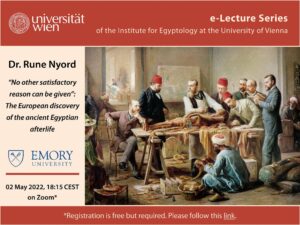 Maandag 2 mei, 18.15 uur (online)
Maandag 2 mei, 18.15 uur (online)
No other satisfactory reason can be given”: The European discovery of the ancient Egyptian afterlife
Dr. Rune Nyord (Emory University)
The modern understanding of the ancient Egyptians as bent on a quest for eternal life is the result of a long history of Western engagements with ancient Egypt. Associations like the preservation of bodies for eternity and initiation into religious mysteries interacted with textual sources of the Biblical and Classical traditions to shape images of the ancient culture that could be deployed in a variety of contexts for theological, ideological, colonial, and other purposes. This lecture examines some key formative moments in this tradition, suggesting that many aspects of the modern understanding of Egyptian afterlife beliefs owe as much to the contemporary concerns of the milieus that helped shape them as to the ancient Egyptian sources that were only gradually becoming known as these ideas were crystalizing.
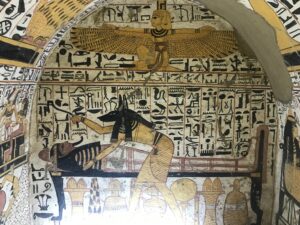 Donderdag 5 mei, 20.00 uur (online)
Donderdag 5 mei, 20.00 uur (online)
The Turin Museum’s current research at Deir el-Medina
Cédric Gobeil
Kosten: £5
Within the framework of the French Archaeological mission at Deir El-Medina carried by the IFAO, the Museo Egizio of Turin is conducting research on a few Ramesside tombs located in the western necropolis. These tombs have been chosen based on the many artefacts belonging to their owners which are now kept in the museum. In addition to giving the opportunity to study the fragile tomb structures using new technologies, this fieldwork is a unique chance to re-contextualize many objects of the museum’s collection, shedding a new and fresh light on them. In a few seasons, the Turin team will ultimately be able to protect and conserve these monuments for future generations.
Vrijdag 6 mei (hybride)
 Shifting Sands: Change Over Time in Ancient Egypt
Shifting Sands: Change Over Time in Ancient Egypt
9th Annual Birmingham Egyptology Symposium
The Symposium will consist of nine presentations from PhD students and independent researchers as well as a tour of the portion of the Eton-Myers Collection on loan to the University of Birmingham and a keynote address from Tony Leahy, Honorary Research Fellow in Classics, Ancient History and Archaeology at the University of Birmingham.
Zaterdag 7 mei, 14.30 uur (online)
The Western Wadis of the Theban Necropolis
Piers Litherland
Kosten: £5
The clearance of the Wadi Bairiya shaft tombs brought to light a hitherto unknown group of court women of the period of Amenhotep III, including a Great Chief Wife of the King, Nebetnehet, a Son of the King, Menkheperre, a Wife of the King, Henut, a Daughter of the King, Tia, and at least 28 other individuals whose burials were deliberately destroyed in pharaonic times. Further study of the site and its surroundings, and additional work in the Western Wadis and Wadi 300, has produced evidence of a cycle of wetter weather in at least four periods, the most extreme of which was the XVIIIth dynasty. As well as advancing our understanding of this landscape and its development, this wetter weather may account for a marginal expansion in the hunting and gathering constituents in the economy and provide a model for explaining the extraordinary expansion of the economy in the early XVIIIth dynasty and its subsequent contraction through the XIXth and XXth dynasties.
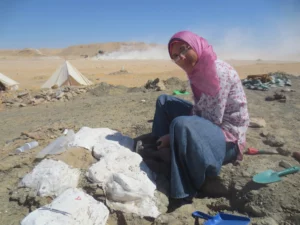 Zaterdag 7 mei (online), 21.00 uur
Zaterdag 7 mei (online), 21.00 uur
Rediscovering Egypt’s Lost Dinosaurs
Sanaa El-Sayed and Matt Lamanna
Egypt’s vast archaeological record and engaging material culture have long excited people around the world, but did you know that this region’s history stretches back well into the Mesozoic Era, or Age of Dinosaurs? In the early 20th century, a series of German expeditions recovered fossils of several new and extraordinary ~95-million-year-old dinosaur species from the Bahariya Oasis in Egypt’s Western Desert, most famously the enormous sail-backed semi-aquatic predator Spinosaurus aegyptiacus. Tragically, however, all these fossils were destroyed during a British Royal Air Force bombing of Munich in late April 1944. In 2000, a collaborative Egyptian-American research team co-led by Matt Lamanna became the first scientists to discover dinosaur fossils in the Bahariya Oasis in nearly a century; among these were a partial skeleton of a new and gigantic sauropod (long-necked plant-eating dinosaur) that was later named Paralititan stromeri.
More recently, researchers from the Mansoura University Vertebrate Paleontology Center in Mansoura, Egypt—including its co-founder, Sanaa El-Sayed—have collected additional, important dinosaur fossils from Bahariya, and moreover have expanded their paleontological efforts to include geologically younger (~75-million-year-old) sites in the Kharga and Dakhla oases. Foremost among their finds from the latter is another new sauropod, Mansourasaurus shahinae, which constitutes one of the best-preserved late Mesozoic-aged land-living backboned animals known from the entire African continent. Collectively, these discoveries have cast unprecedented light on Egypt’s remarkable dinosaurs, helping to restore a scientific legacy that was lost during the Second World War.
 Maandag 9 mei, 18.15 uur (hybdride)
Maandag 9 mei, 18.15 uur (hybdride)
Die schulischen Ostraka aus dem Ramesseum
Dr. Christophe Barbotin (Louvre Museum, Paris)
Zwischen 2002 und 2008 wurde eine große Zahl hieratischer Ostraka von Christian Leblanc, dem Direktor der « Mission archéologique française de Thèbes Ouest » in der südöstlichen Ecke des Ramesseum-Temenos entdeckt. Mit einigen Bild-Ostraka und Bildhauerstudien ergänzen sie das Material, das Quibell in den Jahren 1895 und 1896 an genau derselben Stelle des Tempels gefunden hatte und das von Spiegelberg 1898 veröffentlicht wurde. Zum großen Teil stammen diese Dokumente aus dem Schulkontext. Sie bilden eine außerordentliche Illustration der antiken Methoden des Schreiberunterrichts mit Beispielen zu allen Stufen, vom einzelnen und schlecht geformten hieratischen Zeichen bis zu literarischen Texten und selbst Hieroglyphen. Die neuen Ostraka werden im Vortrag präsentiert und diskutiert, mit einem Fokus auf die wichtigsten und sonderlichsten davon.
Donderdag 12 mei, 18.15 uur (online)
Ägyptisch-deutsche Ausgrabungen im Sonnentempel von Matariya/Heliopolis
Prof. Dr. Dietrich Raue (Universität Leipzig)
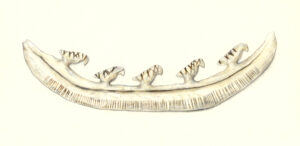 Donderdag 12 mei, 19.30 uur (online)
Donderdag 12 mei, 19.30 uur (online)
De valk tijdens de predynastische en vroegdynastische periode
Dr. Stan Hendrickx (KU Leuven)
Kosten: € 2,50 voor donateurs, € 5,- voor niet-donateurs, gratis voor studenten
De valk is zonder twijfel één van de belangrijkste symbolen van het koningschap in het Oude Egypte. De valk wordt gedurende de Naqada III periode bijzonder populair voor beeldjes, hangers en andere objecten. De populariteit van de vogel houdt aan in de Dynastische periode, waarbij vooral de combinatie met de serekh en koningsnamen opvalt. Deze elementen lijken in oorsprong onafhankelijk, maar worden met elkaar in verband gebracht vlak voor het begin van de 1e dynastie. In deze lezing zal Stan Hendrickx een overzicht geven van de documentatie die van de valk voorhanden is, gezien binnen de context van het ontstaan van de Egyptische staat.
 Woensdag 18 mei, 15.00 uur (hybride)
Woensdag 18 mei, 15.00 uur (hybride)
NINO-EOL-voorjaarslezing:
Voor Babel en nadien. Schriften en Talen in het Oude Nabije Oosten
Marc Van de Mieroop
De talrijke teksten van het Oude Nabije Oosten geven ons een breed palet aan schriften en talen, die de geschiedenis van de regio tot een van de meest interessante van de Oudheid maken. Deze lezing is gebaseerd op het boek Before and After Babel. Writing as Resistance in Ancient Near Eastern Empires, dat binnenkort zal verschijnen bij Oxford University Press. Ze schetst hoe het gebruik van talen en schriften radicaal veranderde tussen het tweede en het eerste millennium v.Chr. – voor Babel en nadien – en legt uit hoe we de explosie van nieuwe schriften kunnen interpreteren en dit in relatie tot de groeiende dreiging van de beruchte imperiums van Mesopotamië.
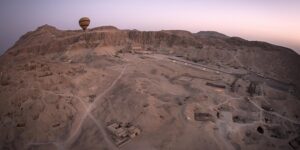 Donderdag 19 mei, 18.00 uur (online)
Donderdag 19 mei, 18.00 uur (online)
The Middle Kingdom Theban Project: six seasons of archaeological and epigraphic work in the cemeteries of Deir el-Bahari and Asasif (Luxor)
Antonio Morales (Alcalá University)
In the last six years, the University of Alcalá Expedition and its Middle Kingdom Theban Project have set up a multidisciplinary and international team of experts that is conducting archaeological excavation, epigraphic work, and conservation in several tombs in the area of Deir el-Bahari, with the major goal of improving our knowledge on the historical circumstances of the later part of the Eleventh Dynasty and the beginning of the so-called “Classical Period”. In this talk, Antonio Morales shall present the major aims and strategies developed to respond to the main questions of the project. Documenting, studying, and publishing several of these First Intermediate Period and Middle Kingdom monuments from Deir el-Bahari and Asasif will no doubt allow scholars to have a better understanding of the role of Thebes in the construction of the classical age in pharaonic history.
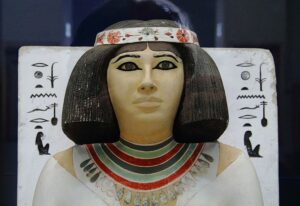 Zaterdag 28 mei, 19.00 uur
Zaterdag 28 mei, 19.00 uur
Women’s Work: Public and Private Power in Ancient Egypt
Dr. Jean Li
There is a well-known and often repeated characterization that Ancient Egyptian women were “better off” than their counterparts in other ancient civilizations. Join Dr. Jean Li for a discussion of this notion: To what extent was this true? Was it equally true both in the public (governmental) sphere and in the private sphere? What were the activities in which women engaged, and how did women exercise public and private power in society?
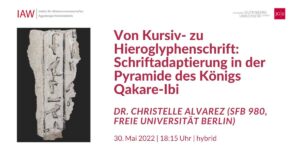 Maandag 30 mei, 18.15 uur (hybride)
Maandag 30 mei, 18.15 uur (hybride)
Von der Kursiv- zur Hieroglyphenschrift: Schriftadaptierung in der Pyramide des Königs Qakare-Ibi
Dr. Christelle Alvarez (Freie Universität Berlin)
Ritualtexte, die in den unterirdischen Bereichen von Pyramiden gefunden wurden, wurden von kursiven Inschriften auf Vorlagen in Hieroglyphen an den Wänden der Pyramiden übertragen. In den Texten der Pyramide von Ibi (8. Dynastie) sind Spuren dieser Textanpassung, aber auch der Schriftanpassung, sichtbar. Diese Präsentation gibt einen Überblick über den Prozess der Textanpassung und fokussiert auf die Materialität des Schreibens. Ziel ist es, die Beziehung zwischen Inschriften auf Vorlagen und Wänden zu beleuchten und die kognitiven Prozesse der Schriftadaptierung hervorzuheben.
 Maandag 30 mei, 18.15 uur (online)
Maandag 30 mei, 18.15 uur (online)
Cities, regions, and trade: Power and state-building in ancient Egypt in the Bronze Age
Juan Carlos Moreno García
Situated at the crossroads between North-eastern Africa, the Mediterranean, the Near East and the Indian Ocean, ancient Egypt was a strategic pathway that facilitated contacts and the circulation of peoples, products and ideas across these vast regions. Sometimes it was the monarchy that took the initiative in these contacts, whereas in other cases mobile populations, local leaders, itinerant merchants and independent individuals fulfilled such role.
Archaeology is gradually revealing the importance of these actors, usually neglected in official inscriptions that highlight, by contrast, the centrality of the monarchy and its institutions. At the same time, new methods of research cast a new light on the modalities of these contacts and the extent of the networks operative in the Bronze Age across these regions and, more generally, Eurasia. Finally, Egyptian regions participated in these exchanges in very distinctive ways, so control over flows of wealth, access to coveted goods and contacts with privileged trading partners represented significant moves in their strategies. A constant tension between different political models (centralized, confederacies of cities and territories, regional kingdoms) reemerged once and again through the millennia, led often to the collapse of the central authority and seem inspired, at least in part, by the impact of trading activities and exchanges.
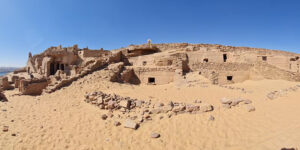 Maandag 30 mei, 20.30 uur
Maandag 30 mei, 20.30 uur
The 12th Dynasty Elite of Elephantine
Alejandro Jimenez-Serrano
Kosten: £5
The discovery of 12th Dynasty tombs in Qubbet el-Hawa at the end of the 19th century permitted scholars to understand the Middle Kingdom in the southernmost province of Upper Egypt. This data increased dramatically, when Labib Habachi discovered their ka chapels erected in a household shrine dedicated to Heqaib, a late 6th Dynasty governor who became their mythic ancestor. New excavations carried out by the University of Jaen in Qubbet el-Hawa have shed light on how the local elite was internally organised. Additionally, the discovery of intact tombs has given us much more data about the funerary customs of the highest members of the local community during the late 12th Dynasty.
Dinsdag 31 mei, 18.00 uur
Late Bronze Age Art and Cultural Exchange during the Age of “Internationalism” – Tutankhamun’s Golden Appliqués
Dr. Julia Bertsch (Tübingen)

